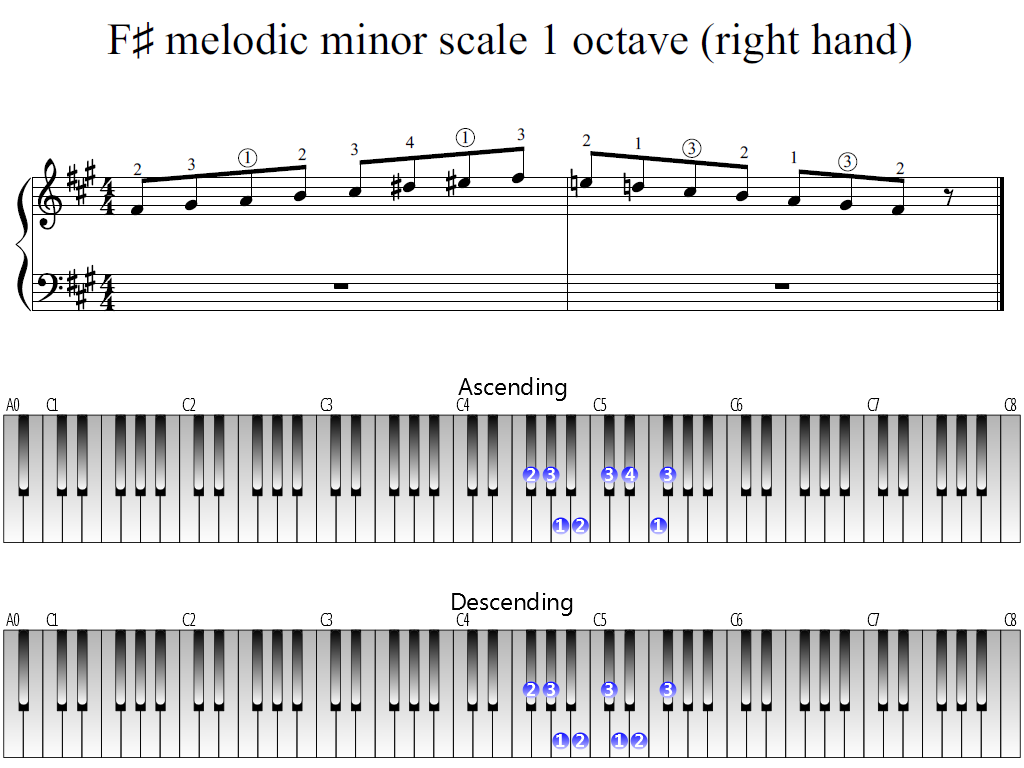

These shapes will take some more practice, although depending on your particular hand mechanics, you may find some of these shapes easier than the barre chords.
#F sharp minor how to#
How to Play the F#m Guitar Chord Version 5:

It sounds good on its own and goes well with lower voicings of F#m too. This is a higher pitched voicing given how high up on the neck it is. It doesn’t sound terrible, so if you do accidentally strum the 6th string, it isn’t the end of the world. But don’t play the sixth string as you’ll get a B. You technically only need to barre five strings, but you can barre all six if it’s easier. This barre chord uses the Am shape with the root on the fifth string. Index finger: Barre all 6 strings in the 2nd fret.How to Play the F#m Guitar Chord Version 4: If you struggle to get all the strings to ring out clearly, use your middle finger to bolster your index finger. This barre chord uses the Em shape with the root note on the sixth string. Don’t give up on the barre chords if you struggle with them, you just need to build up the strength in your hand and some calluses. These shapes are a little trickier, but with regular practice, you’ll find them easier and easier. Index finger: Barre strings 1-3, 2nd fret.How to Play the F#m Guitar Chord Version 3: It’s easier to make a good sounding picking pattern with more strings. You play strings one to four which makes it slightly easier, especially if you’re picking. Then this chord only requires two fingers. It’s easy enough if you master the barring of the three strings.

This version gives you a little more bass with the additional F# on the fourth string. How to Play the F#m Guitar Chord Version 2: There are no skipped strings, so you can strum away to your heart’s content and create a beautiful picking pattern. Whatever variation of F#m this is, it sounds great and is super easy to play. Don’t worry, this is the most complicated thing about this chord. It has a B, which if you omitted the third interval gives you F#m sus4.īut it also has an E which, if you tacked it onto the back of the F#m triad, would make it a seventh. It’s a lovely variation, and if I’m 100% honest, I’m a little confused as to what it is exactly. This chord sounds like a mix between a minor seventh chord and a sus chord. How to Play F#m Guitar Chord Version 1:Įither use your index finger to barre strings 1-3 in the 2nd fret, or if you struggle to barre strings (although it’s definitely worth your while to practice barring strings), play it with your index, middle, and ring finger. If it hurts to barre the string, just remember that regular practice will give you the calluses you need. But it’s a lovely voicing, slightly higher pitched with no bass. This can also make it harder, especially if you’re new to strumming, since you can only strum strings 1-3. This version is easy in that you only play three consecutive strings, all in the same fret. These easy versions will have you feeling confident to play in these keys. These two keys aren’t the most popular ones, but you’ll come across them from time to time if you play regularly with others. How to Play the F#m Chord: Easyį#m is common in the key of E, and you’ll get it in the key of A too. The A has been flattened, meaning, it’s been lowered half a step or by a semitone, resulting in a minor chord. So the major F# chord would be: F# A# C#. It’s called a minor chord because, in relation to the major chord, it has a flattened third. The notes for the chord are taken from the first, third, and fifth degree or interval of the scale. You can easily see this when you look at the circle of fifths. The natural F# minor scale has three sharps, F#, C#, and G#.


 0 kommentar(er)
0 kommentar(er)
